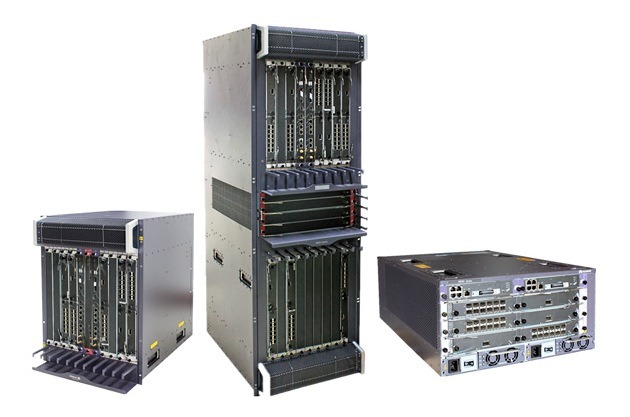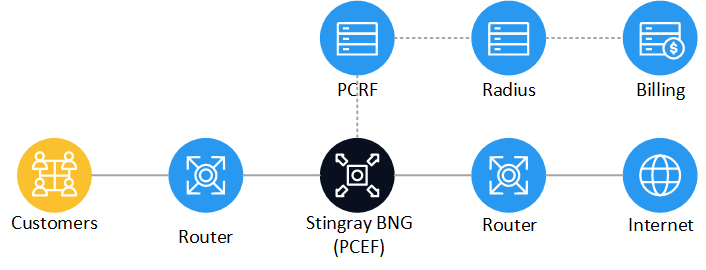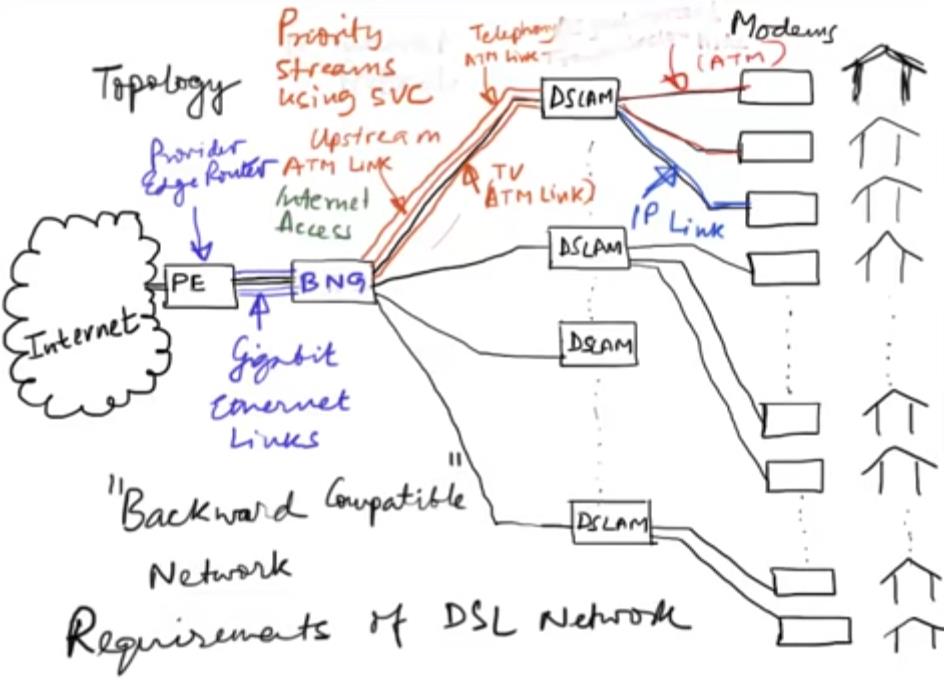
BNG (Broadband Network Gateway) is a device for terminating subscriber traffic. It is responsible for routing within the service network, meaning that the subscriber can receive various services (Internet, telephony, IPTV) via a single connection. The ISPs use BNG to set up authorization, policing, traffic filtering, and Quality of Service.
BNG Development
Recently BNG devices performed only subscriber identification and authorization functions, and the main service provided by the telecom operator was Internet access. Moreover, the connection speed and load were low, no additional traffic management was required, and QoS was not a priority at all.
But network technologies are developing: user services are evolving and subscribers’ demands are growing. More and more services now use IP networks to transmit traffic (VoIP, IPTV, etc.), the volume of transmitted information has increased significantly, the traffic has become very mixed due to a large number of protocols and applications. This has led to an increase in the load on BNG equipment and the new functionality requirements.
Any telecom operator considers it reasonable to reduce the number of devices in the network: this reduces both capital purchase and maintenance costs (supplies, service contracts, additional high-speed switching ports). In addition, getting multiple functions from one platform solves the issue of their integration and interaction. BNG doesn’t work independently – it needs an authorization server (such as Radius) for a user account and IP-address binding, to which policing rules and routing are applied.
Given the fact that BNG operates with subscriber traffic, as well as Deep Packet Inspection systems, it is a good idea to combine these two devices in one solution for ISPs.
BNG Options
As with many service devices for telecom operators, BNG can be organized in several ways.
Hardware BNG
Such devices are produced by all leading manufacturers of carrier-class network equipment: Cisco, Juniper, Huawei, Ericsson. These solutions are usually high-cost, high-performance and reliable, and have very rich (sometimes excess) functionality. Such a device can be installed, configured, and not worried about it for a long time.

But there are also disadvantages besides the high price. Firstly, by purchasing any of them, you will have to pay for service support every year, and if you need to expand or increase capacity, you will face complexity and even higher costs. Secondly, in order to configure and put it into operation, a highly qualified specialist and experience with this type of equipment is required.
You can save money by buying BNG on the after-market and not pay for service contracts. But probably it will not be the most relevant, productive, and functional device, though it is still reliable and tested out.
Software BNG on x86 platform
Generally, any BNG device consists of a software and hardware platform which runs it. In the case of hardware-only BNG (as in the first option described), the software is compatible with only one type of equipment, specially designed for it, and works quickly and stably. If we consider a separate software solution (BNG on Mikrotik OS, BRASFil from SoftM, Stingray Service Gateway from VAS Experts), it can be installed on a standard compatible x86 server. The cost of such solutions is much lower than hardware ones; they develop much faster and take into account the ISP’s needs; they are easy to upgrade and scale-up performance by purchasing licenses.

Developers of software solutions usually do not stop at supporting one network function, but try to implement a whole range of options and solve more of operators’ tasks. For example, Stingray SG is primarily a traffic analysis and control system (DPI), but it allows implementing CG-NAT, BNG, Traffic Filtering, and other functions on the operator’s network. Choosing such a software package is advantageous both for CAPEX (even a server can be used instead of buying a new one) and the number of tasks to be solved.
Free solution based on Linux OS
This solution requires a minimum of financial costs: the software is free, even an ordinary PC with special network cards can act as a hardware platform. Stability and functionality depend on the engineer who will configure the system. There is usually almost no documentation for such a platform as it is created and developed by enthusiasts, so updates and additions can be expected for a very long time. If you have experience and skills, you will have to develop and adjust a lot yourself.
Also, Linux-based systems require additional tools for their work: shell, syslog, radius, nfsens, etc.

Conclusion
All three solutions have pros and cons, and every operator determines the criteria for choosing a system himself: load, number of subscribers, budget, technical skills of engineers, price, scalability, additional functions, integration with the existing network.
A reliable and stable BNG can be achieved by choosing any of these options. It is important to evaluate the quality of each component (hardware, software, interconnection) and the list of required functions – in order not to overpay for excess ones or buy additional devices.